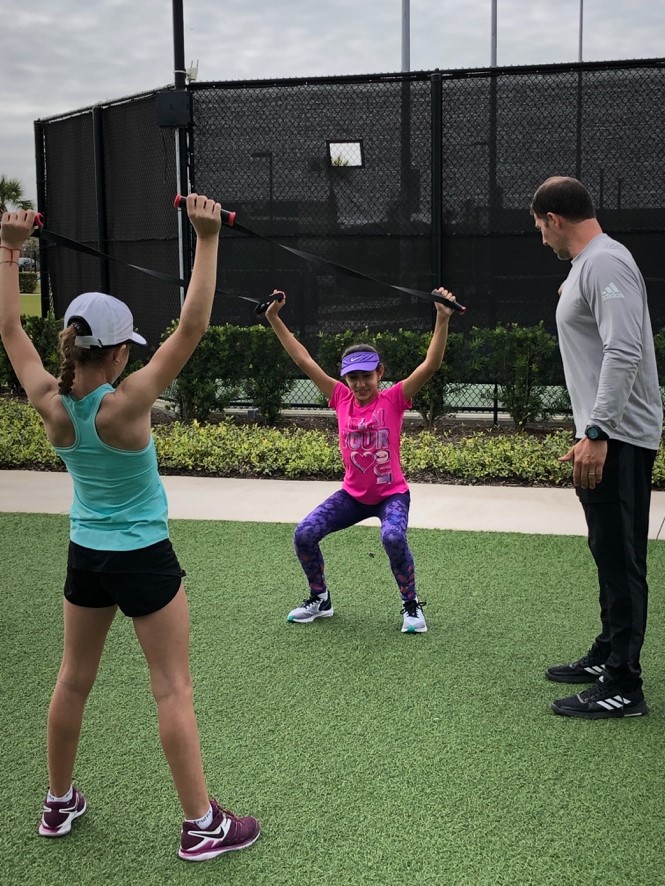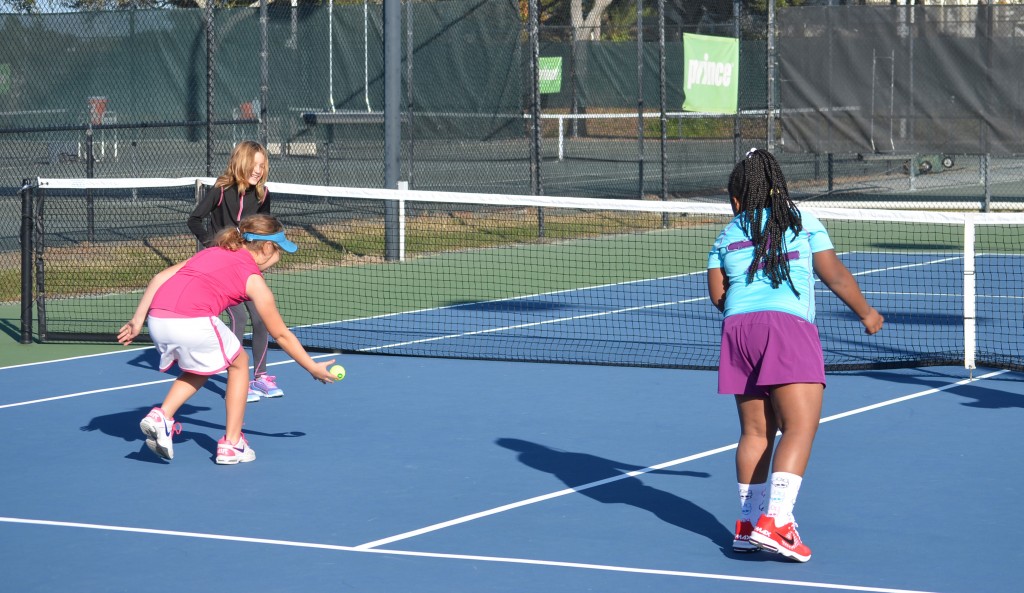MEMBER LOG IN
Categories
Links
Category Archives: Growth & Development
The Best High Performance Tennis Academies In Europe…Reflections On A Coaches Tour Of Europe
This article has been adapted from Kovacs Institute, but we thought iTPA members would find it useful.
Over the last two years the Kovacs Institute has been fortunate to evaluate nearly two dozen of the top junior development tennis training environments. In 2022 it was going to major academies, training centers and visiting with top coaches in Florida. In 2023 it was evaluating the top training environments in Spain, France and Italy. The 2023 trip included nearly 20 top junior development coaches who work daily developing young talent from 6-18 years of age. The main goals of the tour were:
- To learn from some of the best tennis coaches, tennis teachers and academies across the spectrum of elite level junior tennis development.
- To better understand the level of the best junior players in the world at the various stages along the junior development pathway.
- Look for commonalities among the best coaches and why they have been successful for multiple decades.
Click the pdf link below for the full article!
ARE WE MAXIMIZING THE WARM-UP TO BENEFIT THE ATHLETES?
By Johnny Parkes, USTA Senior Manager Player ID and Development, MTPS
The warm-up is the most underutilized and undervalued part of a training session. Picture the standard dynamic warm-ups and you will usually see players running a couple laps followed by some dynamic stretches with low engagement and boredom; players are monotonously trying to get through it. Some may throw in a couple sprints at the end and off they go. If the warm-ups are in the gym, you may see players cycling on a bike with their arms crossed for 5 minutes before lying around the floor, some foam rolling and most chatting with each other. No engagement, no challenge, no purpose in their preparation.
For years I have questioned the way dynamic warm-ups are delivered; what I am seeing youth athletes do does not align with what we know about principles of growth and maturation physically, cognitively, emotionally, and socially.

The warm-up is the best time to work on athletic development skills. It should be integrated into every training session and competitive event. If organized right, the warm-up will be a progressive plan to optimize athletic development through a blend of general movement skills and tennis-specific skills. It should be FUN.
We must re-evaluate and modify how we currently deliver warm-ups to capture the engagement of athletes to best prepare them physically AND mentally.
DEVELOPING YOUR M-V-P
Whether you have 10 minutes or 30 minutes to do a warm-up, it should be done with an MVP in mind; a Mission, Vision and Purpose.
I have detailed my M-V-P below, that has drawn inspiration from master tennis coaches, athletic development coaches such as the legendary Vern Gambetta owner of the GAIN Network, Athletic Medicine experts such as Ed Ryan, former Director of Sports Medicine USOPC, sports science/strength and conditioning experts such as Dr. Paul Lubbers and Dr. Mark Kovacs. You can develop one to fit your philosophy, wants and needs.
MISSION
Enhance Athletic Performance through a systematic, integrated and progressive approach in an environment that instills habits of daily physical and mental preparation to develop the most robust, adaptable tennis athletes possible.
VALUES
- Environment
- Teaching and Coaching
- Growth Mindset
- Relationships
- High Standards
- Commitment to Excellence
PURPOSE
Develop competent, confident athletes that meet the demands of the sport.
Once your M-V-P is established, it will provide direction for you to develop the framework informed by science and delivered with art. The warm-up can be structured according to the RAMP concept:
- Raise – designed to increase blood flow, muscle temperature and elasticity and neural activation.
- Activate – Engage muscles for the upcoming session
- Mobilize – Focus on movement patterns which will be used during the game
- Prepare (Potentiate) – Gradually increase the stress in preparation the upcoming session
AD WARM-UP FRAMEWORK:
Using this concept as a guide, I created a framework incorporating physical and mental skills to be developed every day. If you can commit 10 minutes each day to warm-up, the equates to 60 minutes over 6 days, more than most children do PE these days. If you have 30 minutes, the cumulative effect is 3 hours a week to develop fundamental and sport-specific skill with the mental skill qualities that can create robust, adaptable tennis athletes. My framework is detailed in this picture:

Movement and Mobility – During this stage replace the 3 L’s (No laps, lines or lectures), with the 3 C’s, Challenge Coordination and Competence will ensure increasing blood flow, muscle temperature AND neural activation.
- Movement – Locomotor activities such as skipping, shuffling, carioca, serpentine runs etc. Use leader/follower, proprioceptive cues to challenge neural activation.
- Mobility – 3 for 1’s. Combine several dynamic stretches together to sequence flowing from one movement to the next that will challenge movement problems with balance and stability.
Strength and Balance – Movement patterns such as squat and lunge help mobilize joints and increase movement capacity. It can be effective and efficient in providing an opportunity to individualize based on appropriate pre-habilitation and rehabilitation exercises for the athlete’s needs
Athletic Movement – As the intensity increases we can incorporate a progression of movement or skill patterns, that provide an opportunity to deliver effective speed, agility, and change of direction training that challenge decision making.
Tennis Movement Preparation:
As the warm-up come to an end, it is good to finish with an activity that challenges the athletes at full speed with the opportunity to problem solve and make decisions as the last activity they do before picking up their racquets. Depending on the objective of practice, we may choose an athletic skill that underpins the tennis skill and mimics the skill(s) about to be performed.
The attention to detail in designing the warm-up reflects a coach’s intention to develop robust, adaptable athletes from the ground up.
Our job as coaches should also be to nurture an enjoyment and love for their off-court development. The warm-up, cool-down or stand-alone athletic development session should be something for the player to look forward to. Nothing brings a coach more satisfaction than having their athletes run up to them asking to do certain activities because they are fun, dynamic and appropriate.

So, give it a go, create your M-V-P and reimagine the way in which you deliver the warm-up outside the standard dynamic warm-up. Why not create an environment where athletes maximize their enjoyment in every part of their training schedule starting with the warm-up? Use constraints, insert games, challenge creativity and you just may see a young athlete’s ability to get creative, problem solve and make decisions improve alongside their physical development, which can be accelerated at faster rates with the cumulative effect that the warm-up gives you over the course of a week, month and year.
Posted in Dynamic Warm Up, Growth & Development
Leave a comment
Long Term Athletic Development: Considerations Within Tennis, A Practical Approach Part 1
by Jonny Fraser, CTPS, MTPS
Owner of Science in Tennis, Strength and Conditioning Coach Claudio Pistolesi Enterprise
Long Term Athletic Development (LTAD) refers to the athletic progression of young people improving health and wellbeing, physical performance, reducing the risk of injury and enhancing psychosocial development. Continue reading
Posted in Growth & Development
Leave a comment
Tennis: A Game of Development on and off the Court
By Jonny Fraser, MTPS, Msc, CSCS
Owner Science in Tennis (www.scienceintennis.com)
Everyone has a story why they began playing tennis. Often it is family member or friend having a decisive influence. Otherwise living close to a tennis club or being inspired by watching the game on television may have led to picking up a racket. No matter the reason, tennis offers lifelong participation and the opportunity Continue reading
International Olympic Committee (IOC) consensus statement on youth athletic development
Below you will see the abstract from the full report and also some of the major principles outlined in the report. Please let us know if you agree with the points made and if you have any thoughts specifically related to this topic. Continue reading
Youth Athletic Development: International Olympic Committee Consensus Statement
Below are some of the conclusions from the International Olympic Committee (IOC) consensus statement on youth athletic development which was recently published in the British Journal of Sports Medicine. Some very interesting conclusions and ideas presented. Very relevant for any Continue reading
Should Young Kid Lift Weights? What Does the Science Tell Us?
For the last few decades, the discussion around whether young kids should lift weights or perform resistance training has progressed substantially. It is important to review the science around resistance training in young individuals and make decisions about training based on the best available science. Continue reading
10 Key Concepts of Youth Physical Fitness
Improving youth physical fitness is a major objective of city, state, regional and federal government agencies, multiple organizations and trade associations, non-profits and private companies. Below is an article provided by Continue reading
Position Statement on Youth Resistance Training: The 2014 International Consensus
The summary of the document concludes with this statement: “A compelling body of scientific evidence supports participation in appropriately designed youth resistance training programmes that are supervised and instructed by qualified professionals.”
Read the position stand for more detail: Continue reading
Dr. Ellen Rome: Eating Issues in Young Tennis Athletes
Perspectives from Dr. Ellen Rome on Eating Issues in Young Athletes. She is head of the Center for Adolescent Medicine at The Cleveland Clinic, a member of the iTPA Certification Commission and a member of USTA Sport Science Committee. Continue reading

